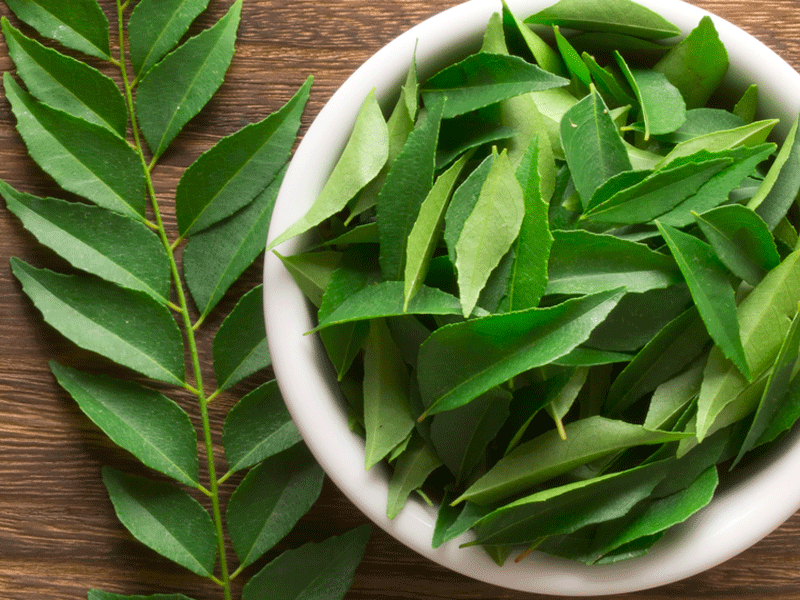Introduction
Curry leaves, scientifically known as Murraya koenigii, are a vital component of Indian cuisine and traditional medicine. These aromatic leaves are widely recognized for their distinctive flavor and numerous health benefits. This comprehensive blog explores the morphology, traditional significance, and medicinal properties of curry leaves, shedding light on their multifaceted role in human culture and well-being.
Morphology and Characteristics of Curry Leaves
Small, Glossy, and Elongated
These leaves, belonging to the Rutaceae family, are small, glossy, and elongated, showcasing a vibrant green color. These fragrant leaves grow on the curry tree, characterized by its slender trunk and compound leaves. They possess a unique pinnate structure, with 11 to 21 leaflets arranged in pairs along the central stem, aiding in their identification and utilization.
Cultural Significance and Traditional Uses of Curry Leaves
Symbolizing Auspiciousness and Purity
In addition to their culinary application, curry leaves hold immense cultural and traditional value in Indian rituals and ceremonies. They symbolize auspiciousness and purity, often incorporated into religious practices and festivals. The presence of curry leaves in homes and temples is believed to ward off negative energies and bring positive vibrations, reflecting their deep-rooted significance in Indian culture.
Culinary Delights and Flavor Enhancing Properties of Curry Leaves
Aroma and Flavor
These leaves are renowned for their unique aroma and flavor, making them a staple in Indian cuisine. They are commonly used as a tempering agent in various dishes, including curries, rice, chutneys, and soups. When tempered in hot oil, these leaves emit a tantalizing fragrance, enhancing the sensory experience of food. Their subtle bitterness and tanginess balance the taste profile of dishes, making them indispensable in regional culinary traditions.
Medicinal Benefits and Therapeutic Properties of Curry Leaves
Rich in Bioactive Compounds
Beyond their culinary and cultural significance, curry leaves possess a plethora of medicinal properties utilized in Ayurveda, the traditional Indian system of medicine. Rich in bioactive compounds such as alkaloids, flavonoids, and essential oils, curry leaves offer various health benefits. They promote digestive health, combat oxidative stress, regulate blood sugar levels, and support heart health, among other therapeutic effects. Incorporating these leaves into the diet can contribute to overall well-being and vitality.
Conclusion
These leaves, with their unique morphology, cultural significance, and medicinal properties, represent a harmonious blend of tradition and modern wellness. From religious ceremonies to culinary delights and holistic healing practices, these leaves play a diverse and essential role in Indian culture and well-being. Understanding their morphology, cultural significance, and medicinal benefits enriches our appreciation for these versatile leaves and the wisdom of traditional knowledge systems.
Studying Natural Herbs at IIMT University’s College of Naturopathy and Yoga Sciences (CoNYS)
Studying natural herbs like curry leaves at IIMT University’s College of Naturopathy and Yoga Sciences (CoNYS) equips students with a profound understanding of herbal medicine, fostering expertise in plant-based remedies. This education promotes sustainable healthcare practices, cultivates research skills, and prepares students for careers in pharmaceuticals, alternative medicine, and wellness industries, contributing to holistic healthcare solutions.
Author: Dr. Anamika,
Assistant Professor, CoNYS.
To gain extensive knowledge about natural herbs, click here:

